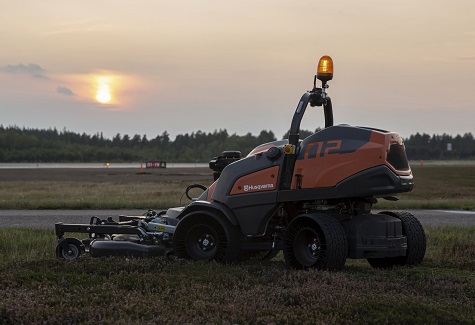Launched at their recent Living City conference in Gothenburg, Husqvarna have announced plans for what they are calling Husqvarna Autonomous Operation for professionals.
The solution, which the company says increases productivity and safety while maintaining large green spaces, consists of multiple self-operated Husqvarna robotic mowers powered by their EPOS technology.

Three pilots are being set up in 2019 to refine the system before an official launch in 2021.
The sorts of places which the manufacturer envisages these machines being used are potentially hazardous sites which can be unsafe or challenging to mow, such as airports and solar parks.
“Built on our 25-year legacy in robotic lawnmowing - Husqvarna Autonomous Operation emphasises our determination to consistently lead through innovation," said Sascha Menges, President, Husqvarna Division. "Robotics and autonomous solutions will play a major role in the future of green space management and Husqvarna Autonomous Operation is just one example of how innovations can improve professional lawn care."
The system uses the new EPOS technology, a high-precision satellite navigation system that provides enhanced real time positioning accuracy, delivering location accuracy of 2-3 centimeters. The technology enables the machine to navigate, within and between work areas, using virtual boundaries.
In its first implementation Husqvarna Autonomous Operation is using the company's new hybrid Rider lawnmowers. In Sweden, Husqvarna Autonomous Operation is currently being tested at Jönköping Airport and Örnsköldsvik Airport, and this fall Husqvarna will expand to include Swedavia Vehicle at Bromma Airport.
To further explore and develop autonomous solutions for airports, the manufacturer has recently invested in Norwegian Yeti Snow Technology, a supplier of self-operated snow removal machines designed specifically for airports. The company believes this opens up the possibility for combined field operation offerings to airports around the world.
The system offers object analysis, and collision avoidance based on information from several independent sensors, utilising cameras, radars and ultrasonic technology. As an additional safety measure, an operator can manoeuvre and override the system, with a hands-on remote control.

“Satellite technology opens up new possibilities for our industry and gives us the opportunity to offer our customers new solutions," said Adam Tengblad, Director of Autonomous Systems at Husqvarna. "This end-to-end solution will further benefit our professional customers by increasing productivity and enabling safe and more efficient green space management in large, hard to reach, areas. Also, the hybrid propulsion used in the pilots can contribute to a decrease in the overall environmental impact for green space management."
The Husqvarna Autonomous Operation system will be operating in further pilot applications during 2020 and be fully available as an end-to-end solution for selected markets by 2021.